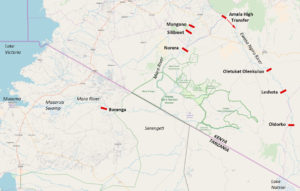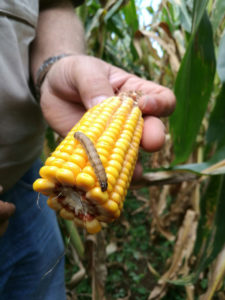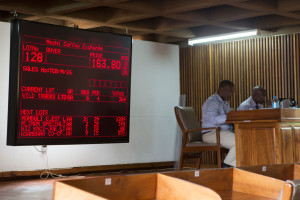by David Brewin
President Magufuli of Tanzania, often known locally as the ‘Bulldozer’, is vigorously continuing his campaign against corruption throughout Tanzania. The President is now turning to other areas of public service, in particular, the industrialisation of the economy.
However, he is well aware of the overwhelming importance of agriculture to the economy. A recent measure he has introduced is the banning of public organisations holding meetings outside their offices so that public events such as the annual agricultural show are no longer an opportunity for ministries to award contracts including bribes for uniforms, catering and entertainment in elaborate pavilions.
Major change in land tenure leases
Dr Magufuli’s reforming zeal is evident in the revelation that a new policy on land tenure is being examined, which is likely to lead to a new national land policy, the draft of which is being subject to public scrutiny by the Ministry of Lands and Settlement Development. The main change is that conditions for foreigners trying to develop land for business would change.
The normal period for a lease of land for development is 99 years, but in the purposed new policy this will be reduced to 33 years for foreigners. In justifying the change, it is said that there have been many instances where foreigner s have applied for land and not used it for the stated purpose. To curb such cases, foreign investors will have to register with the Tanzania Investment Centre (TIC) to acquire land. To purchase a parcel of land from individuals or companies, once the buyer and seller have agreed on the price, the seller is required to surrender the land title to the Commissioner of Lands in order to reissue it in the name of TIC. The intention is that the rights of Tanzanians will be protected and that land needed for development is being used for the purpose originally indicated. The aim of this is also to minimize conflict between foreign investors and communities, and to promote optimal utilisation of the country’s resources. Under the new draft land policy, foreigners will be allowed to directly own land (occupational rights), but not to hold it on behalf of others (derivative rights).
Needless to say, the draft policy is facing criticism from many sides. Although the policy drafting process included consultations – conducted in 8 zones across the country – these have often been rushed and were not ‘conclusive’.
Women
For the first time in Tanzanian history a national land policy will recognise the right to equal access for land for both women and men.
Tractor assembly plant
At present Tanzanian imports about 1,000 agricultural tractors a year. This has encouraged two Indian companies to establish a joint tractor plant in the Morogoro region. It aims to start with the assembly of fully-knocked-down tractors but will move on to the manufacture of complete tractors in the future.
Sugar
With Tanzania still producing much less sugar than is needed by the population, two cabinet ministers are planning to visit Mauritius, a major global supplier of sugar, on a mission to attract investors into Tanzania’s sugar cultivation sector. At the same time the government embarked in October, on a country-wide search for ‘hidden sugar’ often being hidden by suppliers in anticipation of increasing prices.
Local firms are also already setting up new sugar firms mainly in the Morogoro, Kigoma and Songwe regions as well as in the costal district of Rufiji. The National Social Security Fund and a pension fund have also announced joint plans to establish sugar processing factories in Mkunazini, Ngerengere and Morogoro.
Seaweed
Seaweed farmers in Zanzibar are complaining about the falling price of their product. They have appealed to the government to provide more harvesting equipment to help increase selling prices. The Japanese Aid Agency JICA recently convened a workshop to bring the seaweed farmers together. The JICA representative said that a Japanese expert would continue to support seaweed farmers in improving their methods and in the use of appropriate equipment.
Marketing Boards
The government has indicated that it intends to close down existing marketing boards for sales of agricultural products. The Cashew Nut Marketing board has already been closed down. However, in the case of the Cotton Board, the Director General, who was initially removed on allegations of misappropriation of money, has been reinstated. Other marketing boards are being investigated to determine whether they are still carrying out the functions for which they were originally established.
FAO-Dar link up to double rice production
With funding from the Government of Venezuela, a ‘Partnership for Sustainable Rice Systems Development in Africa’ covering ten countries, including Tanzania, is being set up. It will begin by supporting efforts to improve domestic rice supply and strengthen the rice market.
Permanent Secretary in the Tanzanian Ministry of Agriculture, Livestock and Fisheries, Dr Florens Turuka, said that rice productivity in Tanzania is lower than in most neighbouring countries and is one of the lowest in the world. He mentioned factors such as predominantly rain fed production, limited adoption and availability of improved cultivars, minimal use of fertiliser, traditional planting techniques and the limited areas of irrigation as being behind the low production. The new project will be implemented in five targeted irrigation schemes in Morogoro Region and will establish junior farmer field schools to upscale the adoption of systems of rice intensification, purchase of new processing machinery to reduce post-harvest losses.
Deadly weed causes alarm in Arusha Region
A new variety of alien weed affecting plant and human life is spreading around the Arusha region and causing considerable concern. Scientists from the Tropical Pesticide Research Institute (TPRI), Tanzania, the Wildlife Research Institute (TAWIRI) and Education Concerning Hunger Organisation (ECHO) are already studying the strange weed – “Parthenium” – which is referred to as ‘Gugu Karoti’ in Kiswahili.
According to Ms Hannah Hacker, a researcher from Wheaton College in Illinois, the weed is found around Ngaramtoni, Kwa-Mrombo, parts of Meru and Njiro. She is working with ECHO, one of whose scientists is studying the problem, and has said that the first effect of getting into contact with the weed is developing skin rashes all over the body.
Scientists warn that the weed could also grow in the Southern Highlands, Bukoba and some coastal regions should its seedlings find their way there. Scientists are at the moment conducting training to local residents in Arumeru and Arusha Urban districts on the dangers of the alien grass.
When consumed by livestock, lesions in the mouth and excessive salivation occur. According to scientists, consumption also causes tainted meat and milk which can lower the value of livestock. A diet consisting of between 10% and 50% of Parthenium can cause death in cattle. Most livestock avoid Parthenium but will consume it if forced by circumstances to do so.



